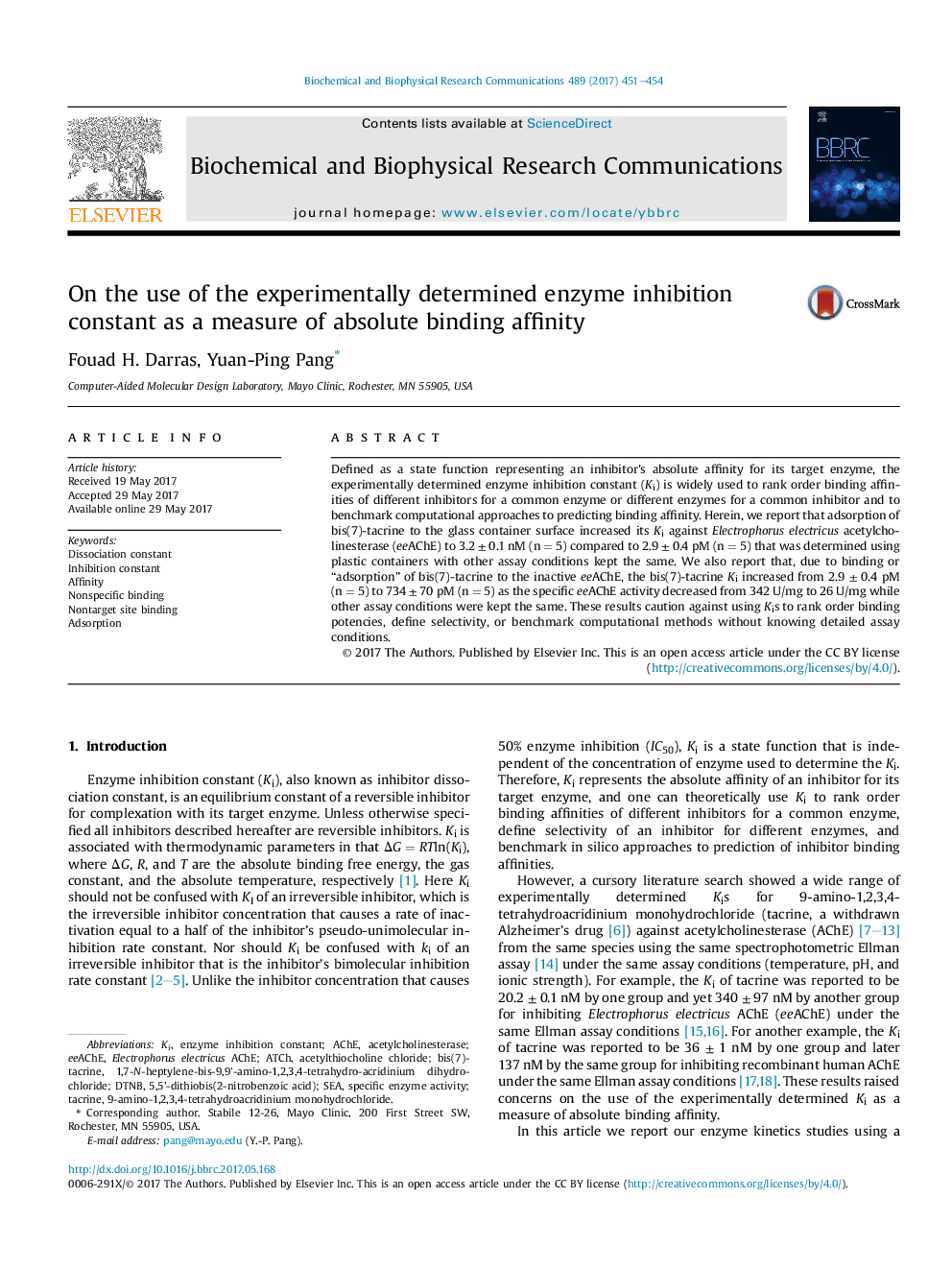| Article ID | Journal | Published Year | Pages | File Type |
|---|---|---|---|---|
| 5505075 | Biochemical and Biophysical Research Communications | 2017 | 4 Pages |
â¢Inhibition constant (Ki) is widely used as an absolute binding affinity indicator.â¢We show that the container surface can serve as a nontarget site for test inhibitors.â¢We also show that inactive enzyme can serve as a nontarget site for test inhibitors.â¢These sites change Ki by up to 1000-fold if not factored in the Ki determination.â¢We caution against using Ki as an affinity indicator without detailed assay conditions.
Defined as a state function representing an inhibitor's absolute affinity for its target enzyme, the experimentally determined enzyme inhibition constant (Ki) is widely used to rank order binding affinities of different inhibitors for a common enzyme or different enzymes for a common inhibitor and to benchmark computational approaches to predicting binding affinity. Herein, we report that adsorption of bis(7)-tacrine to the glass container surface increased its Ki against Electrophorus electricus acetylcholinesterase (eeAChE) to 3.2 ± 0.1 nM (n = 5) compared to 2.9 ± 0.4 pM (n = 5) that was determined using plastic containers with other assay conditions kept the same. We also report that, due to binding or “adsorption” of bis(7)-tacrine to the inactive eeAChE, the bis(7)-tacrine Ki increased from 2.9 ± 0.4 pM (n = 5) to 734 ± 70 pM (n = 5) as the specific eeAChE activity decreased from 342 U/mg to 26 U/mg while other assay conditions were kept the same. These results caution against using Kis to rank order binding potencies, define selectivity, or benchmark computational methods without knowing detailed assay conditions.
